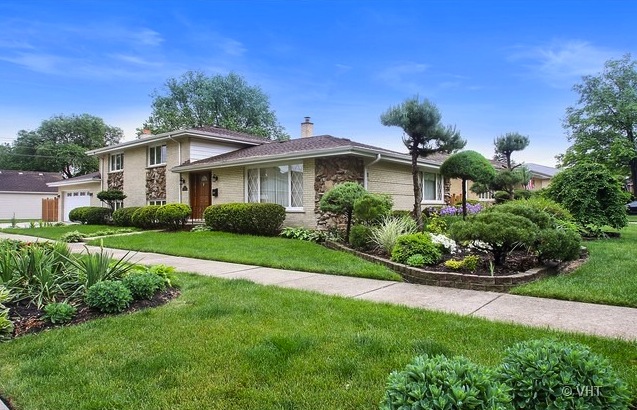North Shore houses are flying off the shelves, but if you’re thinking mighty manors in Lake Forest and Winnetka, think again. Sales are anemic in this suburban luxury market to start the year (the top 5 percent of sales) but brisk in a handful of towns a few miles inland. “We’re seeing [sales] mostly in Morton Grove, Niles, parts of Skokie, and the west side of Wilmette where there are smaller homes close to the Edens Expressway,” says David Yocum, a Redfin real estate agent with a North Shore practice. “Park Ridge has been hot at the lower price points for a couple of years. All of these areas have similar housing stock, 50s and 60s split-levels or ranches.
“What is very pronounced this spring is that demand on the high end, over a million, has been very weak and those sellers are dropping prices or canceling their listings and waiting until next year,” he adds. “But the competition for homes priced below $400,000 has been fierce with multiple offers, short market times and sale prices above list.” Average sale prices for the Chicago area’s luxury market dipped 3.9 percent in the first quarter over the same period in 2014, according to a Redfin report, while the rest of the market jumped 11.8 percent.
I had Redfin pull some additional numbers. For single-family homes priced under $400,000, there are some interesting shifts taking place. From 2012 to 2013, the average sale price took a double-digit percentage leap in Morton Grove, Niles, and Skokie. Gains continued into 2014 and the first half of 2015, slowing somewhat. Furthermore, the average sale-to-list ratio creeped up in all five towns examined between 2012 and 2014 (with Wilmette and Park Ridge rounding out the list), and, most dramatically, the time a home spent on the market was roughly cut in half in this same period, rising a little to start 2015 due in large part to the winter’s slow season.
The orchards and farms along the north-south Edens became suburban cul-de-sacs in the mid-20th Century. With the new demand, a lot of these simple, unremarkable, but conveniently located homes are getting new kitchens and baths, and some are getting complete gut rehabs (see here and here). “They’re selling like hot cakes to young families. It’s a new suburban wave,” Yocum says.
Even without eye-pleasing updates, ranches and split-levels in these areas often sell quickly and near ask. This regional shift jibes with two broader trends in homeownership: the interest in smaller family homes and the changing perception of what makes a starter home. Instead of 1,100- to 1,500-square-foot three-beds serving as stepping stones to bigger digs within five years, more buyers are starting with a condo and transitioning to these single-families with the next 15 or 20 years in mind; for some this is their first home purchase, but even these buyers expect to be in it for the long haul.
Mary Friesl Wilson grew up in Park Ridge and started her family in Chicago’s North Center neighborhood, where she had owned a condo for 10 years. With her work in Elmhurst and her husband’s in Evanston, a move back to Park Ridge made sense. They closed on a three-bedroom split-level in October, devoid of any major updates, for $413,000, or $17,000 off the list price. “We compromised space for location,” says Wilson. “It was crucial to stay close to the city, our places of work, and to have the amenities of a well-developed suburb.” Wilson’s family loves the split-level layout for entertaining and for its gentle divide of living spaces.
First-time buyer Phil Hoden moved from Skokie to Morton Grove in May with his wife and two young kids. They also opted for a split-level, a slightly smaller three-bedroom. “We saw a lot of homes lacking basic upkeep, but this seller spent the money over time to keep the property intact,” says Hoden, a 34-year-old software developer. He wanted a large yard for the kids, access to the expressway, and good elementary schools. “We don’t envision moving again at least until our [firstborn] son is ready for high school.”
In the case of Niles, a particularly popular slice of town overlaps with the Park Ridge school district. All things being equal, you can raise a family in Niles for less than in Park Ridge (in home prices and taxes). And, given a dry basement, 1,300 square feet of living space can balloon to 2,000 down the road.
These towns at a short remove from the lake have always been about middle-class housing. Even with the housing recovery and teardowns, you’d be hard-pressed to find a house priced over $1 million in Niles or Morton Grove (Skokie and Park Ridge have clusters of wealth, and Wilmette’s money is mainly east of the Metra tracks). Families are still flocking to the north ‘burbs, despite those now opting for city living and the shrinking class of homeowners in the Millennial generation.



